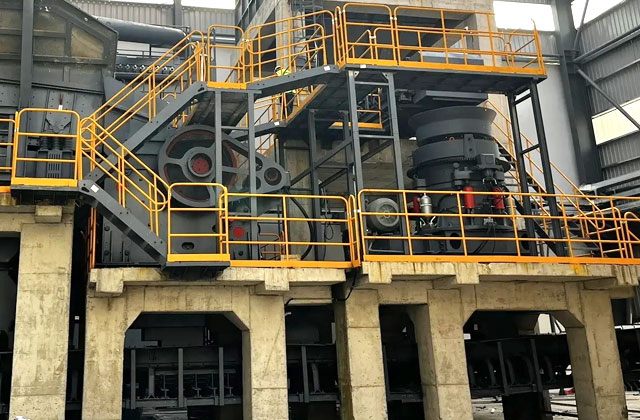Combination application of cone and jaw crusher
In modern mining, quarrying, and construction industries, crushing equipment plays a vital role in material processing. Among the various types of crushers available, jaw crushers and cone crushers are the most commonly used. While each has its unique advantages, combining the application of both jaw and cone crushers in a crushing circuit has become a highly effective method to improve efficiency, product quality, and reduce operational costs.
Overview of Jaw and Cone Crushers
Jaw Crusher:
A jaw crusher uses compressive force to break down large rocks or ores. It features two jaw plates—one stationary and one movable—that crush material by compressing it. Jaw crushers are best suited for primary crushing because they can handle large feed sizes and deliver a relatively coarse output.
Cone Crusher:
Cone crushers operate by squeezing the material between a moving cone and a stationary bowl. They are designed for secondary or tertiary crushing stages and excel at producing finer, more uniform particle sizes. Cone crushers are suitable for crushing medium-hard to hard materials such as granite, basalt, and iron ore.

Why Combine Jaw and Cone Crushers?
The combination of jaw and cone crushers harnesses the strengths of both machines, allowing for a more streamlined and effective crushing process:
-
Efficient Material Reduction:
Jaw crushers efficiently handle large, hard feed materials and break them down to smaller sizes suitable for further processing. The cone crusher then takes the jaw crusher’s output and performs secondary crushing, producing fine, uniform aggregates. -
Optimized Product Quality:
The jaw crusher’s coarse crushing followed by the cone crusher’s fine crushing yields products with better particle shape and gradation, ideal for construction, road building, and other industrial uses. -
Reduced Wear and Tear:
By using the jaw crusher for the initial stage, the cone crusher is protected from handling oversized or excessively hard materials, extending its lifespan and reducing maintenance costs. -
Higher Throughput:
The staged crushing approach allows a higher volume of material to be processed efficiently, as each crusher performs the role it is best suited for. -
Energy Efficiency:
Jaw crushers consume less energy at the primary crushing stage, while cone crushers provide a fine crushing effect with lower overall energy input, resulting in an energy-efficient system.
Typical Application Workflow
-
Primary Crushing:
The raw material enters the jaw crusher, where large blocks are broken down into manageable sizes. -
Secondary Crushing:
The output from the jaw crusher is fed into the cone crusher, which further reduces the material to the desired size and shape. -
Screening and Sorting:
After cone crushing, materials are screened to separate the finished products from the undersized or oversized materials. Oversized pieces may be recirculated back to the cone crusher.
Practical Examples
-
Quarrying:
Large granite blocks are first crushed by a jaw crusher. The broken granite is then fed into a cone crusher, producing crushed stone for road construction and concrete aggregate. -
Mining:
Iron ore lumps are initially reduced in size by a jaw crusher. The finer secondary crushing with a cone crusher helps in preparing the ore for subsequent grinding and processing.
The combination application of cone and jaw crushers leverages the advantages of both types of crushers to form an efficient and cost-effective crushing system. This combination improves crushing performance, enhances product quality, minimizes wear, and increases throughput. For industries focused on productivity and product standards, adopting a crushing circuit that integrates jaw and cone crushers is a smart and reliable solution.
